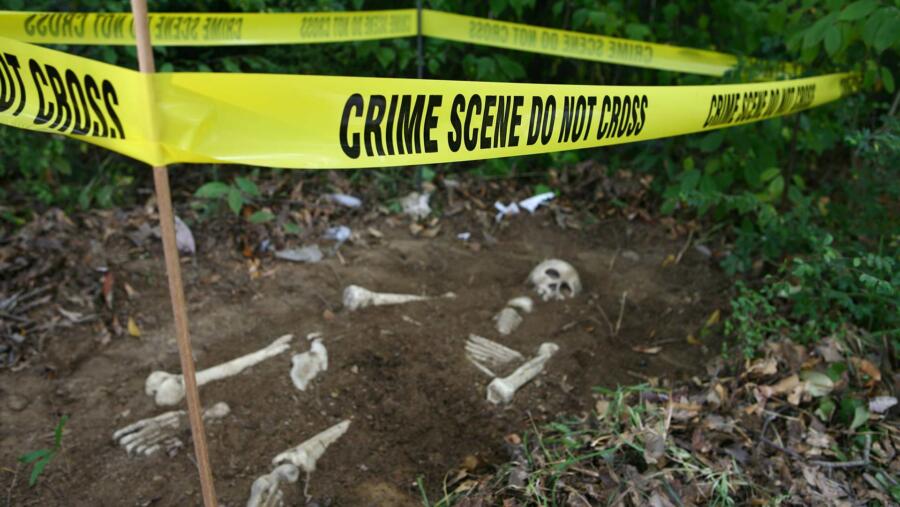The Primal Fear of Being Buried Alive
The fear of being buried alive has haunted humanity for centuries. In the 19th century, people were so terrified of premature burial that inventors created coffins with escape alarms. Writers like Edgar Allan Poe fueled this dread, and filmmakers such as Quentin Tarantino turned it into cinematic horror.
Yet, for some, this terror wasn’t just a nightmare—it was their final reality. These gruesome stories don’t come from fiction. They are chilling accounts of murderers who chose to bury their victims alive, often as a twisted method of control, revenge, or cruelty.
Reggie and Carol Sumner: Buried in Their Golden Years
Reggie and Carol Sumner had hoped for a peaceful retirement in Jacksonville, Florida. Instead, in 2005, they fell victim to a horrifying plot crafted by Tiffany Ann Cole and three accomplices: Alan Wade, Bruce Nixon, and Michael Jackson.
This wasn’t a crime of passion. It was a calculated and cold-blooded act. The group dug a grave days before the abduction. Then, they invaded the Sumners’ home, tied them up, and forced them into the trunk of their own car.
Driven across state lines to the already-dug grave, Reggie and Carol were buried alive. Jackson later confessed he heard moaning as the dirt covered them.
Fingerprints, ATM surveillance, and forensic evidence led to their capture. Jackson was sentenced to death. Nixon received 45 years, while Cole and Wade—initially also sentenced to death—now serve life without parole.
Jessica Lunsford: Innocence Silenced Beneath the Soil
In 2005, Florida faced another unspeakable horror. Nine-year-old Jessica Lunsford was abducted by her neighbor, John Couey—a known sex offender. He held her captive just 150 yards from her home.
Couey didn’t just abuse her. When he decided to get rid of the evidence, he placed Jessica inside two black garbage bags with her stuffed toy. Then, he buried her alive in his backyard.
Despite being buried, Jessica fought to survive. She tore a hole in one bag before ultimately suffocating. Her courage only makes the crime more gut-wrenching.
DNA from Couey’s mattress and other forensic clues sealed his fate. Though his confession was excluded from court, he was still sentenced to death. Couey died in prison before the sentence was carried out.
This case shook the nation and spurred legal reforms like “Jessica’s Law,” aimed at stricter tracking of sex offenders.
Jasmeen Kaur: Betrayed by a Former Lover
Jasmeen Kaur, a 21-year-old nursing student in Adelaide, Australia, had already reported her ex-boyfriend, Tarikjot Singh, for stalking her. Tragically, the warnings weren’t enough.
In March 2021, Singh kidnapped Jasmeen from her job, tied her up, and drove four hours into the South Australian outback. Near a foreboding place called Death Rock, he buried her alive.
Autopsy reports revealed shallow cuts on her neck—an attempt to kill her that failed. Singh’s horrific act left Jasmeen to slowly suffocate underground, a process that may have taken a full day.
He initially claimed suicide, but investigators uncovered inconsistencies. Singh finally confessed and received a sentence of nearly 23 years.
Experts, like criminologist Jesenia Pizarro, stress that crimes like this are rarely spontaneous. They stem from escalating patterns of abuse and control.
The Psychology Behind Buried-Alive Killers
Why would someone choose to bury a victim alive? According to criminologist Eric Beauregard, the answer is chilling. “The offender knows the victim is still alive and wants to inflict pain and agony,” he explains.
This isn’t just murder—it’s psychological torture. Burying someone alive strips them of autonomy, isolates them, and slowly drains their hope. It’s among the cruelest methods of killing, requiring a disturbing level of emotional detachment.
What Makes These Crimes So Rare—Yet So Memorable
Buried-alive cases are uncommon but unforgettable. They often involve extensive planning and deep emotional motives—ranging from revenge and rage to sadism and greed.
Victims endure immense suffering, and the killers reveal a calculated brutality. Unlike impulsive crimes, these acts show a complete lack of empathy. That’s what makes them so horrifying.
How Law Enforcement Tracks These Cases
In each case, justice relied on a combination of forensics, witness statements, and technology. Fingerprints, security camera footage, and even soil analysis helped close these disturbing investigations.
Still, buried-alive cases present unique challenges. The act often occurs in remote areas, and the victims’ ability to provide evidence is, tragically, erased by their manner of death.
Why We Must Remember These Victims
The voices of the Sumners, Jessica Lunsford, and Jasmeen Kaur were silenced too soon. But their stories highlight the importance of early warning signs, law enforcement vigilance, and community awareness.
Victims of intimate partner violence, stalking, or sexual predation deserve protection. Ignoring red flags can be fatal. Sharing these stories isn’t about morbid fascination—it’s about learning, preventing, and honoring lives lost to senseless brutality.
FAQs
Why do killers choose to bury victims alive?
It’s often driven by sadism, control, or a desire to prolong suffering. The method is uniquely cruel and psychologically tormenting.
Are buried-alive murders common?
No, they are rare but tend to receive significant attention due to their horrific nature and emotional impact.
What role does forensic evidence play in solving these cases?
It’s crucial. Items like fingerprints, soil analysis, and DNA can link perpetrators to the crime scene even when no witnesses survive.
What laws have changed due to these crimes?
Jessica’s Law was introduced to increase penalties and tracking for sex offenders following Jessica Lunsford’s death.
Do all perpetrators get the death penalty?
Not always. Sentencing varies by region and case complexity. Some receive life imprisonment, others face capital punishment.
How can such crimes be prevented?
Early intervention, community awareness, and stricter enforcement of restraining orders can help prevent escalation to lethal violence.

